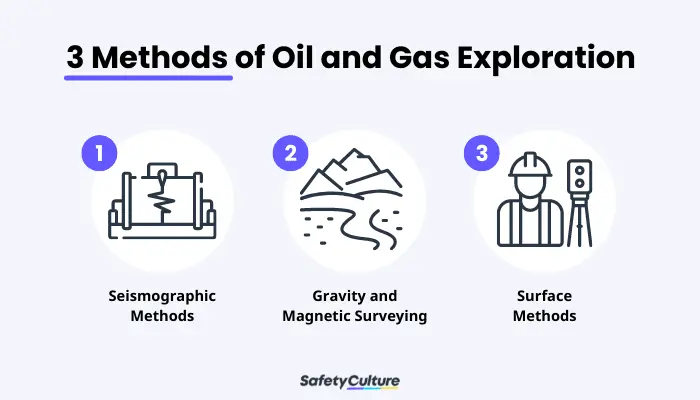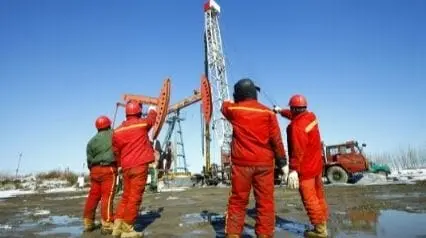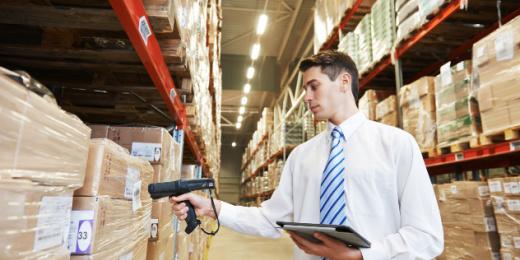What is Exploration in the Oil and Gas Industry?
Exploration in the Oil and Gas (O&G) industry refers to the research and discovery of potential drilling and extraction sites and reserves for crude oil. This is done by conducting multiple surveys, analyses, and tests on the areas of interest.
Need for Oil and Gas Exploration
The oil and gas production process can be categorized into three parts: upstream, midstream, and downstream. Oil and gas exploration is part of the upstream process, which is the first step to oil and gas production as a whole and thus the most important step. Before oil can be refined into different products and sold, O&G companies need to first assess the areas they’d like to extract from.
Although there are sites proven as ideal extraction sites and reserves, repeated drilling in one place can affect the environment around it and the quality of oil produced. Repetitive drilling in the same site also forces extractors to keep going deeper and further as they slowly finish the oil reserve closer to the surface. Looking for new areas to utilize can reduce these risks, as well as mitigate environmental risks.
Process of Exploration

3 Methods of Oil and Gas Exploration
There are three common ways to explore the land for onshore oil and gas exploration. These are:
- Seismographic methods, such as seismic prospecting, which use sound waves or seismic waves to create a map of the rock formations underground.
- Gravity and magnetic surveying, which work with the help of a gravimeter to pick up gravitational force in the earth, or a magnetometer attached to an aircraft or aquatic vessel to assess rock formations based on their response to the magnetic fields around them.
- Surface methods, which is about observing either the geological features of the area to understand the rock formations there, the hydrocarbon seeping into the ground, or both.
O&G stakeholders, managers, and professionals come together to decide on picking an area. Together, they establish their interest in an area and review their geographical map to gain a mutual understanding of it. Once all are in agreement over the area, they start planning their budget and schedule.
After the planning, the company works on its documents and leases. Some essential leases they’ll need are the leases for manpower, vehicles, and the land itself. A landman would usually help with this task by going through public records to check for land and mineral ownership before securing the leases. When all paperwork, budget plans, and schedules have been set, the exploratory drilling and oil and gas extraction process can begin.
Digitize the way you Work
Empower your team with SafetyCulture to perform checks, train staff, report issues, and automate tasks with our digital platform.
Get Started for FreeRisks
The O&G industry is a high-risk industry in many ways. Cost-wise, it is a very expensive industry to be in, as planning for exploration itself can cost $5 to $20 million per exploration site and study. In some cases, depending on the circumstances, a failed exploration attempt can cost even more.
Oil and gas exploration activities can also sometimes be a risk to the environment. Depending on the location and extraction method used, oil and gas exploration and production can potentially displace local communities, pollute the area’s surrounding land and bodies of water, displace animals from their natural habitats, and damage ecosystems. Small earthquakes can also be a side-effect of oil exploration attempts, which can lead to further damage.
However, recent discoveries and technologies have been discovered and are now also being used to help the environment while O&G companies conduct their exploration and production. New technologies such as satellites, remote sensing devices, and positioning systems now make it possible to discover and explore new reserves with less contact with the actual drilling site, lessening the need to drill exploratory wells. There are also new kinds of drilling equipment now that allows drillers to excavate more oil from a much larger area without multiple holes, such as directional drilling.
In addition to environmental safety, human safety is also something to consider. Not only can the earthquakes brought about by exploration attempts cause bodily harm, but the pollution from them can be ingested by humans, which can cause diseases. Although new water recycling and treatment efforts are helping to mitigate these risks, they are still a cause for concern for many.
The act of oil and gas exploration itself can also be a risk. Based on the US’s Occupational Safety and Health Administration (OSHA), some of the most common accidents that happen during oil and gas exploration and production are related to explosions and contact with flammable and easily breakable materials. The site visits and analysis can also be disrupted by sudden weather changes, which can lead to floods, strong winds, and muddy grounds that can be dangerous to work with.
SafetyCulture for Safer Oil and Gas Exploration
Having a digital checklist can be beneficial to help manage, avoid, and address risks during the oil and gas exploration stage. Checklists are an essential part of the O&G industry as they help with staying compliant with local laws and regulations and reporting and recording issues. They can also help with risk prevention, helping you ensure all preventive measures are in place before moving forward with your exploration and production. A digital checklist is also more convenient to use and access rather than a pen and paper one.
One app that offers this is SafetyCulture (formerly iAuditor). SafetyCulture is a digital checklist and inspection app that promotes safety in the workplace by making it easier to plan for issues as well as report and address them. You can create your own checklists, use your existing Word, Excel, or PDF checklists, or use a premade one from the Public Library and modify it as needed. Everything will then be stored in the cloud where you can view them anytime from both mobile and desktop.
With SafetyCulture, you can ensure a safer experience when conducting an oil and gas exploration by:
- Sharing problems with your team by reporting Issues, assigning Actions, or giving a Heads Up to them
- Attaching media files and notes to your inspection forms
- Creating and using QR codes for faster inspections
- Connecting sensors to your equipment and monitoring them through the app
- Generate analytical reports based on accomplished inspections
- Exporting your inspection reports as Word and PDF files for later viewing




